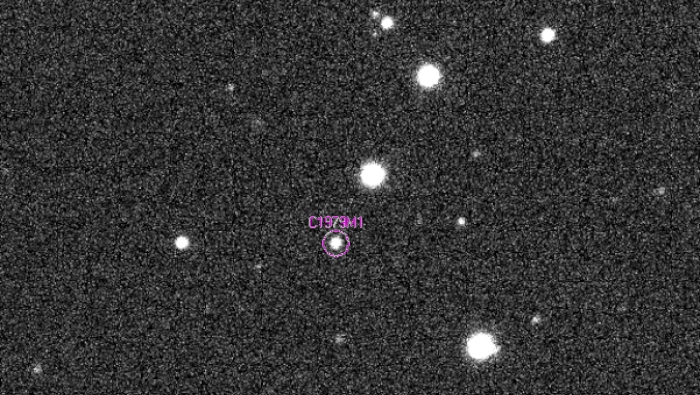With all sorts of rocks flying around willy-nilly in the space around Earth, telescopes around the world are keeping a careful eye on the sky to make sure we're not in any danger.
So when the University of Arizona's Catalina Sky Survey and the University of Hawaii's Asteroid Terrestrial-impact Last Alert System spotted what seemed to be a small, incoming object on an impact trajectory with Earth on August 25, scientists sat up and paid attention.
However, closer inspection revealed it wasn't an asteroid after all. Almost 56 years after it was launched into space, NASA's Orbiting Geophysics Observatory 1 (OGO-1) was finally falling from the sky.
On Saturday at 20:44 UTC, it did so, NASA has confirmed, harmlessly burning up on atmospheric entry in a shower of flaming debris.
OGO-1 started its career in early September 1964, when it arrived in equatorial Earth orbit. It, and the other five satellites in the OGO series, were designed to study our planet, its magnetosphere, its atmosphere, the space between Earth and the Moon, and the effect of the Sun on near-Earth space.
The satellite spent five years collecting data for its mission before it was no longer operating efficiently enough to justify continuing. It was placed in standby mode in November of 1969, and officially decommissioned in November of 1971.
Since then, the 487-kilogram (1,074-pound) satellite has been a lifeless chunk of machinery slowly but surely descending towards its doom. That's because its eccentric orbit brought it close enough to Earth that even minute amounts of atmospheric drag hundreds of kilometres above the planet incrementally brought it lower and lower.
 (University of Hawai'i)
(University of Hawai'i)
This is normal procedure for decommissioned satellites, to remove them from the crowded space around our planet, thus reducing the risk of collisions in space, which can generate smaller, more dangerous space debris.
However, although OGO-1 was the first launched in its series, it was the last OGO in the sky - OGO-2 through OGO-6 safely deorbited starting in 1972, with OGO-5 (launched in 1968) coming down in 2011. All burned up on re-entry, their debris falling into the sea.
This is what happened with OGO-1, too. Although its entry was 25 minutes earlier and a little farther east than predicted, it burned up over the South Pacific ocean, around 160 kilometres (100 miles) southeast of Tahiti, in French Polynesia, NASA said.
#Space | https://sciencespies.com/space/incoming-object-with-earth-impact-trajectory-turns-out-to-be-old-nasa-spacecraft/
No comments:
Post a Comment